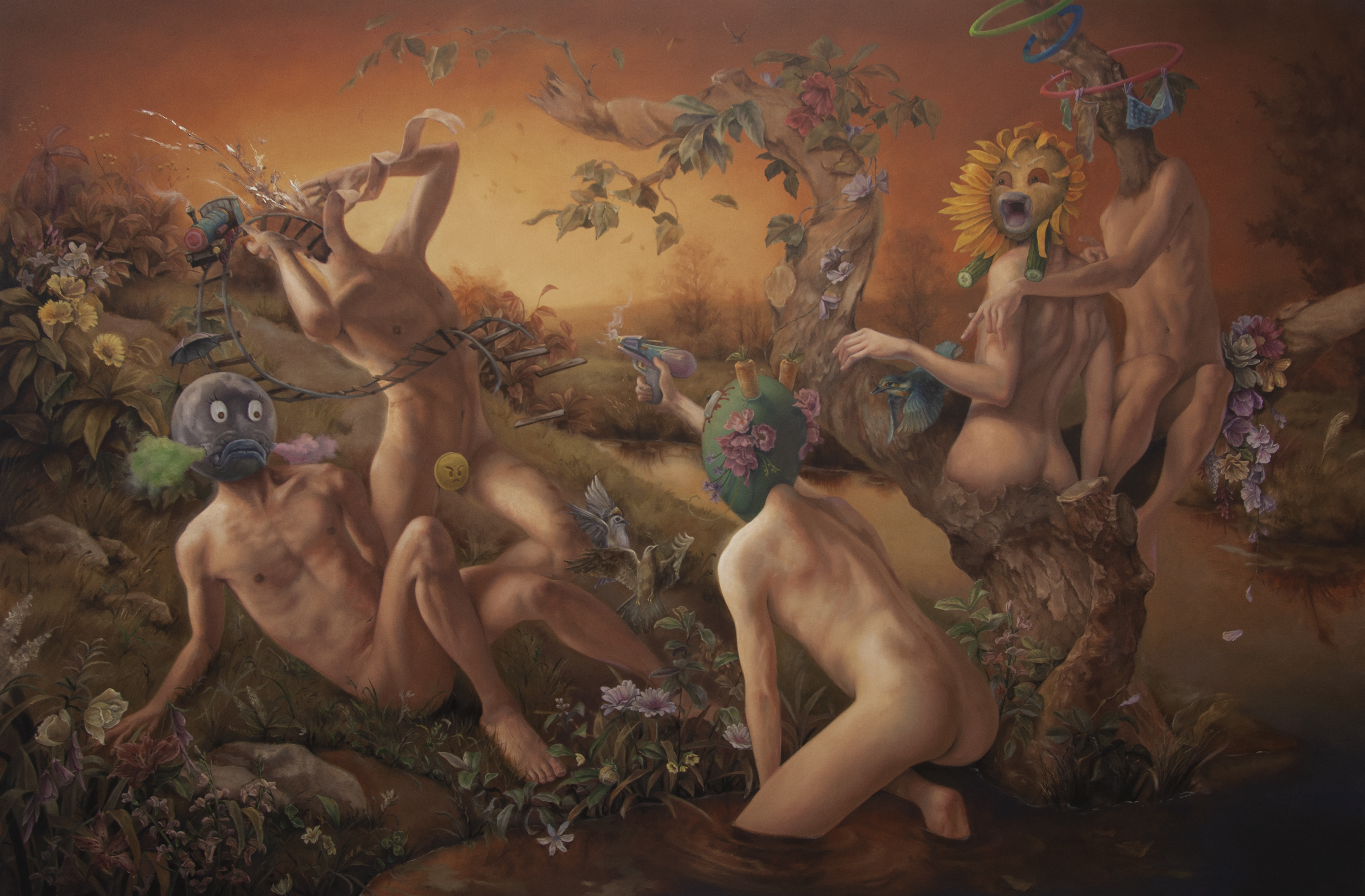
Tony Guo
To live is to be enveloped in absurdity
tonyguoart.com
instagram.com/guotentag/

My current body of work transforms the chaotic history of my experiences and memories into a mystical world. The sentiments evoked by these paintings induce an estranged relationship to our waking lives. My prominent influences are Surrealism and mythology. Surrealism offers the means of liberating the irrational unconscious. Mythology, as I understand, rejects the separateness of everything in this fluid world. For example, there are strange scenarios in my paintings such as chairs drowning in a concrete floor; a naked figure morphing into a tree; wild animals rushing up a staircase. The way these tangible objects are misplaced in space conveys the tension of complex human emotions and provides ways to contemplate the absurd nature of reality. To live is to be enveloped in absurdity. With that in mind, I construct fantastical dreamscapes that are simultaneously caught up in the past and present.
The primary objective of my current body of work is to offer an intimate portrayal of human experience grounded in realism, yet presented through absurdism. Realism can reflect a wide spectrum of feelings and emotions. It is fascinating to observe how our experiences remain continually resonant. They transform into bizarre patterns in dreams and pervade our everyday waking lives. As an artist, I work through the lens of a storyteller, conjuring up moments stored deep in one’s subconscious and interweaving mismatched fragments of dreams and memories.
The subjects I use reflect a continuum of our human conditions. In his essay “Nature”, Ralph Waldo Emerson, the 19th century American writer discusses the connectedness of everything in the universe including intangible human sensibilities. My practice is also influenced by 20th century Surrealism. Artists from this movement shared an interest in “pure psychic automatism” and rejected visions of reality. My painting is an access point into the subconscious. I seek to give form to a fluid world that is boundaryless, that steps out of the confinements of duality and merges into one narrative. The chaotic irrationalism in my paintings contemplates states of mind and alludes to the perplexity of human experience. The canvas is steeped in juxtapositions between humour and discomfort, rationality and absurdity. By cultivating a cloud of mystery, I encourage viewers to resolve this sense of ambiguity in accordance with the shape of their own emotional landscapes.
Technically, my work is inspired by classical paintings. I employ traditional painting methods where I build up layers of opaque and transparent paint to create luminosity. I’m very engaged in painterly Romanticism. I’m intrigued by the ability of painting to elicit emotional responses through visual elements such as colour, composition, scale and light. Theodore Gericault’s painting The Raft of Medusa is an example of a painting I have enormous admiration for. The dramatic scene leaves the spectator in a heightened surge of terror and awe. The composition of figures and the execution of chiaroscuro is a great source of study. I’ve also been looking at works by Edward Hopper, Andrew Wyeth and Renato Muccillo. Their works employ a relatively muted colour palette, effective in arresting emotions. The sheer beauty of light quality is executed masterfully and complex feelings emanate. I’m also interested in the provocative scenarios and surreal dreamscapes produced by contemporary painters such as Jeremy Geddes, Michaël Borremans, Adam Miller and Hannah Yata.



